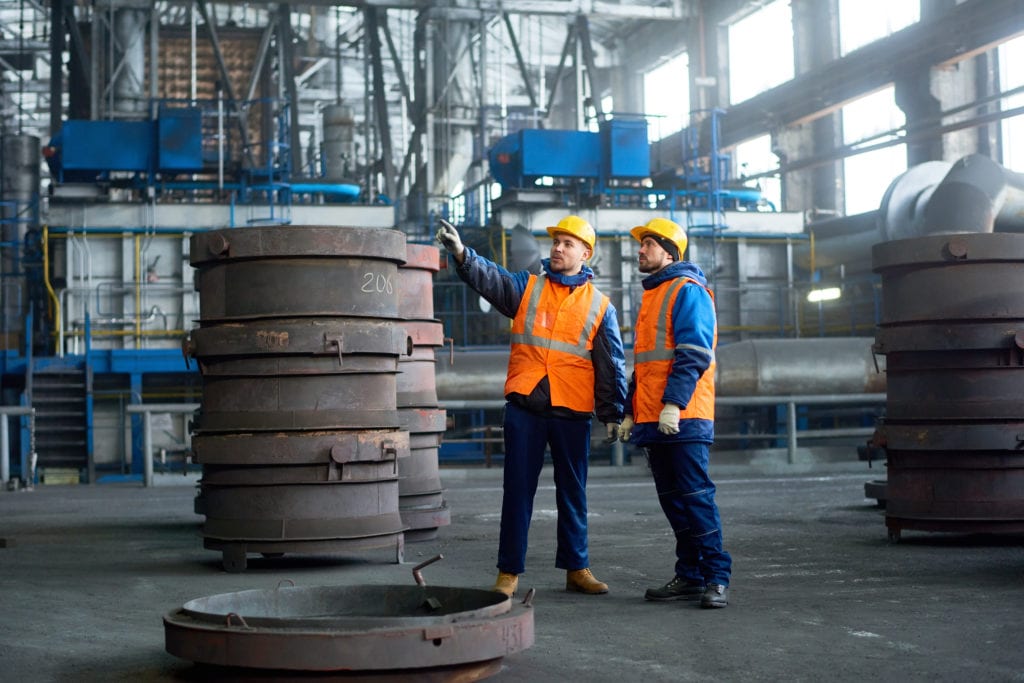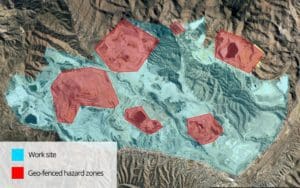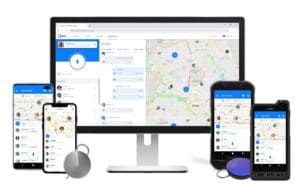The heavy industries of energy, mining, utilities, construction, and manufacturing are reckoning with the reality of the fourth industrial revolution and what that means for their workforce. The entire flow of business is changing for these heavy industries, especially those impacted by global supply chains. Trade patterns are rapidly shifting. International events like COVID-19 are driving changes in demand. And politically motivated trade wars have a ripple effect across these industries.
In the face of these changes, organizations need the competitive advantage of digital transformation to survive and thrive. In fact, organizations that understand digital transformation earn 26% more profit than others — key as new global entrants create more and more competition.


Heavy industry participants that embrace digital transformation will gain enormous opportunities to improve operations, performance, and communications. But, these organizations need to support digital transformation across the entire enterprise, including their deskless workers, which make up 80% of the global workforce.
Voice-first multimodal collaboration software like Orion, designed for the deskless workforce, complements company-wide digitalization strategies and enables organizations to empower and connect their deskless workers. Here are three ways companies can improve team operations, performance, and communications with intelligent collaboration tools.
#1 Transformative Team Collaboration
All heavy industry teams — from front gate security staff, above or below ground mining personnel, factory floor workers, construction vehicle drivers, and more — need solutions for seamless communication and collaboration that go beyond simple two-way communications typical of push-to-talk (PTT) devices or radios. Opening the door to digital transformation with an advanced collaboration platform typically reserved for deskbound workers enables companies to connect their workers in ways that increase productivity.
Real-time collaboration means users can connect from anywhere. Unlike low-quality, bulky radios, digital tools allow collaboration from any distance, network, and device. Engaging tools that use LTE cellular data, 5G, mesh, or Wi-Fi allows for limitless connectivity between users.
Ubiquitous connectivity on ruggedized devices is critical for many heavy industries. Construction workers are dispersed basement-to-rooftop. Security teams tasked with protecting large manufacturing facilities might be dispersed building-to-building. And energy or mining organizations are typically in remote locations with workers above and below ground.


This location intelligence is mission-critical in places like mine sites or large refineries, where managers need to know where their workers are with precision and without requiring workers to regularly check-in.
Centralized visibility is also key to collaboration. Traditional communications tools limit the ability of managers to monitor the status and location of frontline workers. Orion’s collaboration console provides access to crucial information like maps that demonstrate where employees or assets are located or who is online and active at any time. Centralized visibility also allows users to catch up on archived, logged, and documented messages before, during, or after shifts and stay connected while off-duty or offsite. This means managers have immediate access to onsite teams, enabling them to manage urgent situations should they arise.
Native language ability is also an essential part of team collaboration. Today’s heavy industry participants rely on an increasingly diverse and multilingual workforce or operate across several countries and languages. Language translation skills powered by artificial intelligence ensure workers receive the correct information regardless of the language they speak. This precision provides unmatched operational improvements among multilingual teams, supports a diverse workforce, and enables companies to hire contractors irrespective of their language.


#2 Process Automation
Automating processes with Orion’s voice-first collaboration software opens up boundless possibilities that promote greater efficiency for routine and repetitive processes as well as urgent and dynamic processes. Routine tasks can be moved from workers to automated bots. These bots support voice-activated SOPs, built to speed-up operations and allow workers to complete tasks more independently.
Take the example of the dockworker who starts an unloading workflow when he or she documents the arrival of a new shipment. By sending a picture of the arrival, he or she triggers a response that deploys resources efficiently to that location. In another example, cleaning crews can track and log their work while maintaining the ability to coordinate and access assistance when they need it.


This is last-century methodology and is a waste of time and resources. Today’s deskless workers should be able to use voice to talk through checklists that are instantly recorded, logged, and archived. For instance, a worker uses voice to answer questions like “Have you been authorized to use this equipment?”, “Have you been trained to use this equipment?”, or “Does this equipment need to be serviced?”.
Each of these questions and answers can then trigger the next step or alert managers, engineers, or other workers of any intermediary steps that need to be taken.
Process automation is also key in dynamic or urgent situations. In the case of the cleaning crew, lone worker safety workflows can be triggered by voice-commands like “help-help” that alert security and managers to the workers’ exact location, deploy immediate assistance, and record all subsequent activity.
Collaboration tools, like Orion, integrate with IoT elements, such as environmental sensors, enhanced location sensors, vehicle tracking to provide automated status alerts, proximity-based notifications, and more. The intelligence gained by connecting these systems with workers allows organizations to deploy resources where they are needed, monitor the status of complex and expensive equipment, and keep track of worker safety and locations.
Geofencing triggers can be used to notify teams to prepare and deploy assets for loading, unloading, or various production phases. Organizations that link their transportation workers and warehouse or manufacturing workers with the same collaboration tools can further the automation process. Instead of relying on the dockworker to start an automated workflow, trucks can trigger geofenced workflows to deploy unloading crews once they enter a certain vicinity.
No matter how a heavy industry organization operates, intelligent collaboration tools can help. Additional examples of automated SOPs include safety SOPs, regulatory requirements, lone worker emergencies, health, safety, and environment processes, and Return-to-Work protocols.
#3 Access to Critical Information with Connected Systems
Unlike radios, intelligent collaboration tools amplify worker abilities with instant access to the necessary information they need to do their jobs well. This includes the ability to communicate directly with SMEs as well as the ability to directly connect workers to the information in systems like supply chain management (SCM), work order management, contractor management systems, and more.
Connecting workers with systems immediately amplifies any worker’s ability and intelligence, including new employees and contractors. The use of contractors continues to rise in certain heavy industries like energy, utilities, mining, and transportation, making intelligence amplification an increasingly essential part of ensuring all workers perform at maximum efficiency on Day 1.
Now, new employees and contractors have immediate access to integrated workflows and information they need to get up to speed fast. Collaboration tools that work on any device can be quickly shared with contractors, allowing them to easily access critical information and communicate or integrate with existing groups, subject matter experts (SMEs), backend systems, and knowledge bases.
Enhanced Collaboration with Orion
Organizations in heavy industries that still rely on two-way radios are missing an enormous opportunity to increase productivity and improve the safety of their deskless workforce. Intelligent collaboration tools provide so much more than these two-way devices, which only provide simple communications — and quite frankly do a poor job at that.
Orion enables organizations to unlock this potential through transformative team collaboration, automated processes, and access to critical information with connected systems.
Learn more about Orion solutions for Construction, Facilities Management, Energy & Mining, Manufacturing, Security, and Transportation & Logistics.
You might also like:
- Safe Return to Work: Empowering Deskless Workers with Orion and IBM Watson
- Voice in the Workplace Report
- MBTA and Transdev Partner with Orion Labs for Advanced Communication, Dispatch, & Auditing
- Energy and Mining Case Study: How a Global Energy & Mining Corporation Streamlined Communication and Automated Safety Processes
- Orion solutions for Industrial Operations